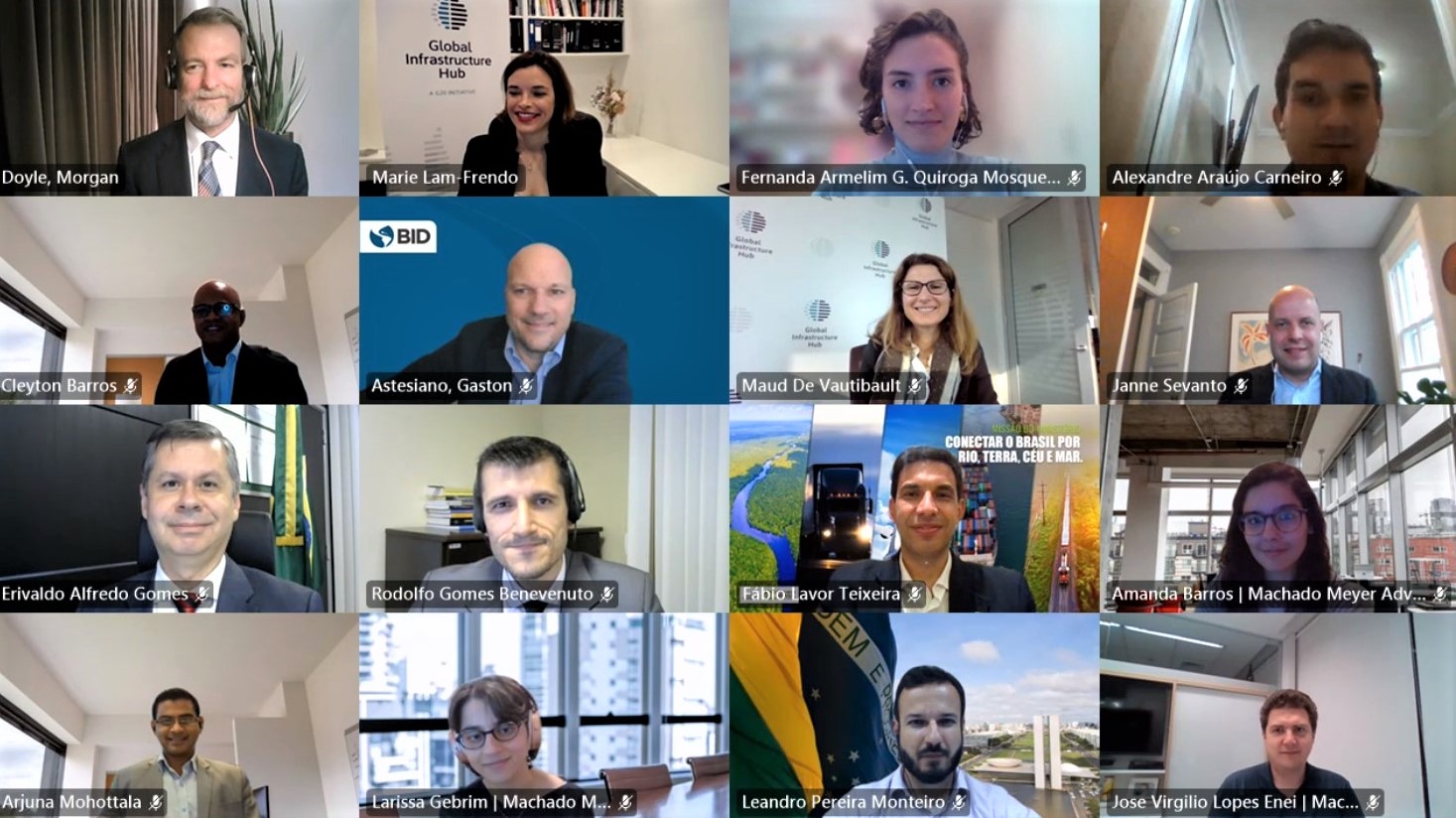What are the benefits of an early market sounding when privatising infrastructure?
In October 2020 the Global Infrastructure Hub (GI Hub), in conjunction with Maritime & Transport Business Solutions (MTBS), delivered a market sounding report to Brazil’s Ministry of Infrastructure aimed at assisting the Government to optimise its Port Privatisation Program.
The report’s completion is a milestone for the GI Hub in its Country Engagement Program with Brazil to deliver improved long-term outcomes regarding infrastructure capabilities in policy, planning and implementation.
The report, which is the first time the GI Hub has collaborated with a government on an existing infrastructure program, presents the outcomes of a structured dialogue between the public and private sectors in advance of the envisaged sale and long-term concession contracts for four port authorities: CODESA (port authority for Espírito Santo), Santos Port Authority, Organized Ports of São Sebastião and Itajaí.
Why conduct a market sounding?
A market sounding (also known as a market consultation) provides the public authority with an opportunity to cross-check its thinking with that of private sector specialists, including contractors, lenders, and equity investors. It is a mechanism for the private sector to deliver feedback on how the packaging and scope of a program could be developed to maximise private sector participation and improve competition. This ultimately benefits the public through increased government revenue and long-term productivity gains in the operation of the infrastructure.
Depending on the complexity of the project, the market sounding can be implemented earlier or later in the process. For a complex large-scale project, an early market sounding can be conducted to identify key success factors and challenges at the outset of the project. A more elaborate market sounding can be implemented at a later stage to test specific business case principles in the market and substantiate the interest of the private sector to invest given the determined project structure.
What are the benefits from port privatisation?
Research has shown that private port operation has improved Latin America and the Caribbean’s competitiveness through increases in efficiency and productivity in cargo management, and data from the World Bank shows private sector participation and port competition is correlated with higher levels of operational and economic performance, and better maintained ports.
Additionally, divesting management and/or operation of the ports can reduce political influence (the private port manager can focus fully on the port development; port investment budgets do not need to compete with other public investments such as healthcare, education etc.) and make ports more agile and adaptive through enabling the use of simpler private decision making procedures.
What are the challenges of engaging private sector parties in port privatisation procedures?
The challenges of engaging the private sector in ports are not only in selecting the best private party and bid, but also optimising the structure for allocating the risks and responsibilities between the public and private party. The market sounding, as part of the transaction preparation process, can assist in the structuring process through providing insight into potential bidders’ ability and willingness to take certain risks and responsibilities.
What are the key risks in the port sector?
A project’s concept phase is an important time to implement an effective risk management framework in order to minimise potential issues that may arise later in the project lifecycle.
Key risks in port transactions can include:
- Demand/revenue risk associated with the user payment through tariff structure: Port PPP projects are generally revenue based concessions whereby the Private Party pays a fee to the Contracting Authority for the right to operate the port concession and then collects all tariffs for services provided in the port from port users. The Private Partner therefore assumes demand and revenue risk and is very sensitive to any factors that could adversely impact user demand for port services. Forms of demand/revenue risk mitigation can include:
- the Contracting Authority absorbing some of the demand risk by applying variable concession fees instead of fixed fees for a part or all of the payment by the Terminal Operator.
- volume guarantees from commercial entities, such as shipping lines or importers/exporters, can provide some level of certainty for the Terminal Operator. - Environmental and social risk: Given the nature of the services provided in a port PPP, like cargo handling, loading and unloading, there is potential for significant environmental and social impact which needs to be carefully considered and managed as part of the PPP project.
- Force Majeure risk: Extreme weather, geological events or terrorism can trigger a Force Majeure clause in a contract. The local political climate can also have a serious impact on port PPP projects, particularly if the local port authority is not the Contracting Authority - although this is unusual.
What are the key trends in port privatisations?
On a global scale, the landlord structure is often the preferred PPP vehicle for port projects. In a landlord structure, the port management and infrastructure development responsibilities are mainly retained by the public landlord, while operations, superstructure and equipment investments are shifted to the private operator.
Other trends that can be observed include having less greenfield investments due to the corresponding risk profiles and therefore a preference for brownfield acquisitions. Additionally, an increased focus on the ‘green port concept’ and resulting permitting and monitoring.
What happens after the market sounding report?
Through the early market sounding, the perceptions of the project start to be formed at an early stage among potential investors, lenders, and contractors.
Typically, the next steps involve the public authority:
- Optimally structuring the project, considering the perspectives of the private sector stakeholders
- Confirming the viability of the project
- Promoting the project and final testing of specific project parameters through a market consultation; and
- Implementing the project (e.g. through a multi-stage tender procedure).
Perceptions of the government’s commitment to the project, the competence of the public sector project team and its advisers, the timing and manner in which information is released to the market and how the process is managed are as important as the quality of the information itself. The public authority must conduct itself in such a way as to sell the project’s concept to the private sector.
These factors are all relevant to transforming a project from a desirable activity in the eyes of government to a business opportunity capable of attracting private sector capital and management in a strong competitive process.

 Country Engagement Program
Country Engagement Program





